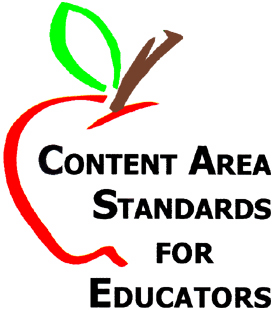 |
Illinois State Teaching Standards Technology Education |

Knowledge Indicators - The competent technology education teacher:
4A. understands that technology involves the generation of knowledge and processes to develop products and systems that solve problems and extend human capabilities.
4B. understands that throughout history technology has been one of the most powerful social, cultural, and economic forces; in turn, these same forces have influenced the development of technology.
4C. understands that historical data help the technologist and the social scientist determine possible scenarios for the future.
4D. understands that the rate of technological development and diffusion is accelerating.
4E. understands that technology includes a combination of “knowing” and “doing. ” The “knowing” component includes technological knowledge as well as the ability to apply knowledge from other fields of study to technological activity; the “doing” component includes the ability to apply this diverse knowledge to technological processes.
4F. understands that outcomes of technological research are sometimes the result of specific, goaldirected activity (e.g., putting a human on the moon), while some outcomes are not intended or planned (e.g., Post-it notes and spin-offs).
4G. understands that technological endeavors often replace older forms of technology, resulting in social and environmental consequences.
4H. understands that technology has economic, political, and environmental connections with culture and society.
4I. understands that designing, developing, producing, inventing, innovating, and problem solving are fundamental concepts in technological activity. (These concepts are human activities that are purposely directed toward meeting needs and wants.)
4J. understands that systems-oriented thinking is important because systems are the building blocks in technology. These systems vary in complexity of working knowledge from very little to substantial technological knowledge to use or operate.
4K. understands that the stability of a system is influenced by all of the components in the system, especially those in the feedback loop.
4L. understands that the nature of technological knowledge and activity are related to information, energy, or physical technologies.
4M. understands that a variety of symbols and languages are used to communicate information and that some are universally applied across technologies (e.g., standardized measurement systems and the metric system), while others are unique to various contexts and technologies (e.g., electrical symbols and computer nomenclature).
4N. understands that technology influences careers by changing the way work is performed, thus creating new types of jobs, modifying current jobs, and reducing the numbers of others.
4O. understands that technology has its own body of knowledge and processes that are connected within that field, as well as to other fields of study.
4P. understands that connections among technological topics are valuable and useful in relating
procedures to one another and building new knowledge bases.
4Q. understands that technological knowledge and activity promote advances in science and mathematics; in other cases, advances in science and mathematics have led to advances in technology.
4R. understands that science and technology utilize similar techniques to investigate and obtain information. These techniques include inquiry, modeling, and forecasting.
4S. understands that mathematical models, scientific principles, and computer-generated models are used to develop and produce products and systems.
4T. understands that engineering concepts and principles are used in the development and use of products and systems.
4U. understands that technological transfer occurs within a technology, between technologies, across other fields, and between countries.
Performance Indicators - The competent technology education teacher:
4V. communicates the relationship of the systems in technological development via timelines, paradigms, and taxonomies.
4W. identifies measurement techniques utilizing appropriate representatives of technology, math, science, and engineering.
4X. communicates career information related to a changing workforce and instills the importance of portfolio development and lifelong learning.
4Y. determines the significance of a variety of symbols and languages, both universal and unique, that are used to communicate information from technology to technology, technology to human, or human to technology.
4Z. develops curricula integrating technology education with other fields of study.
4AA. develops scenarios depicting how technological change affects human endeavors in the social, cultural, and economic arenas.
4BB. analyzes and describes technological transfer that occurs within a technology, between technologies, across other fields, and between other countries.